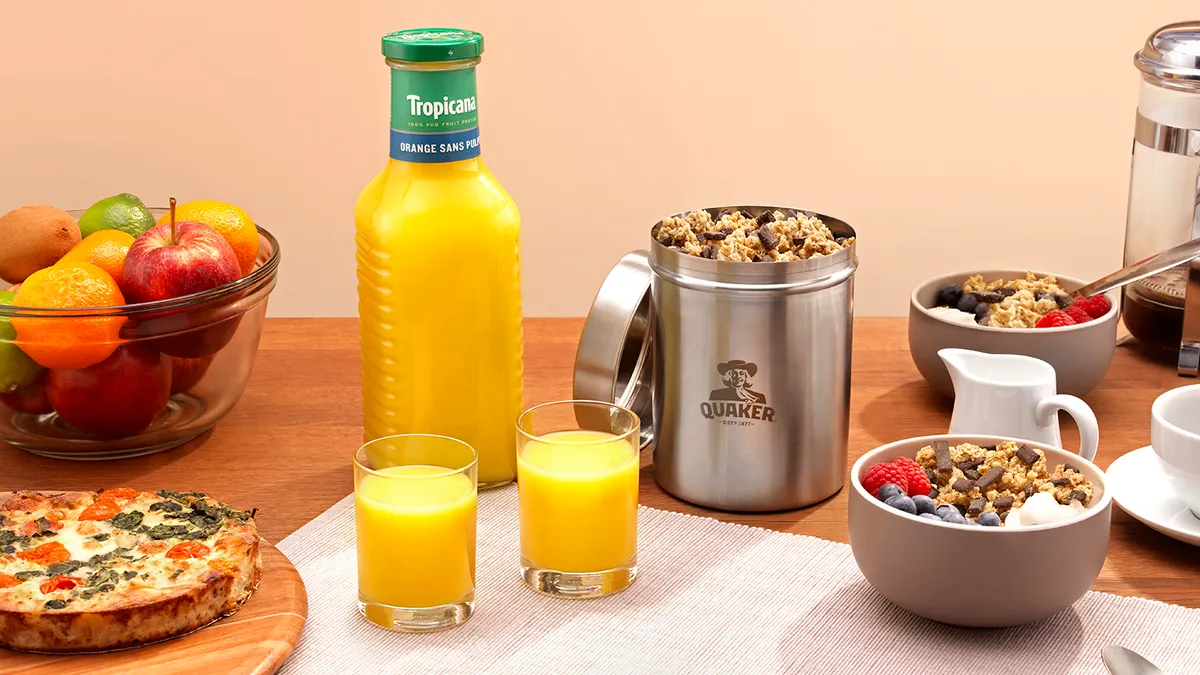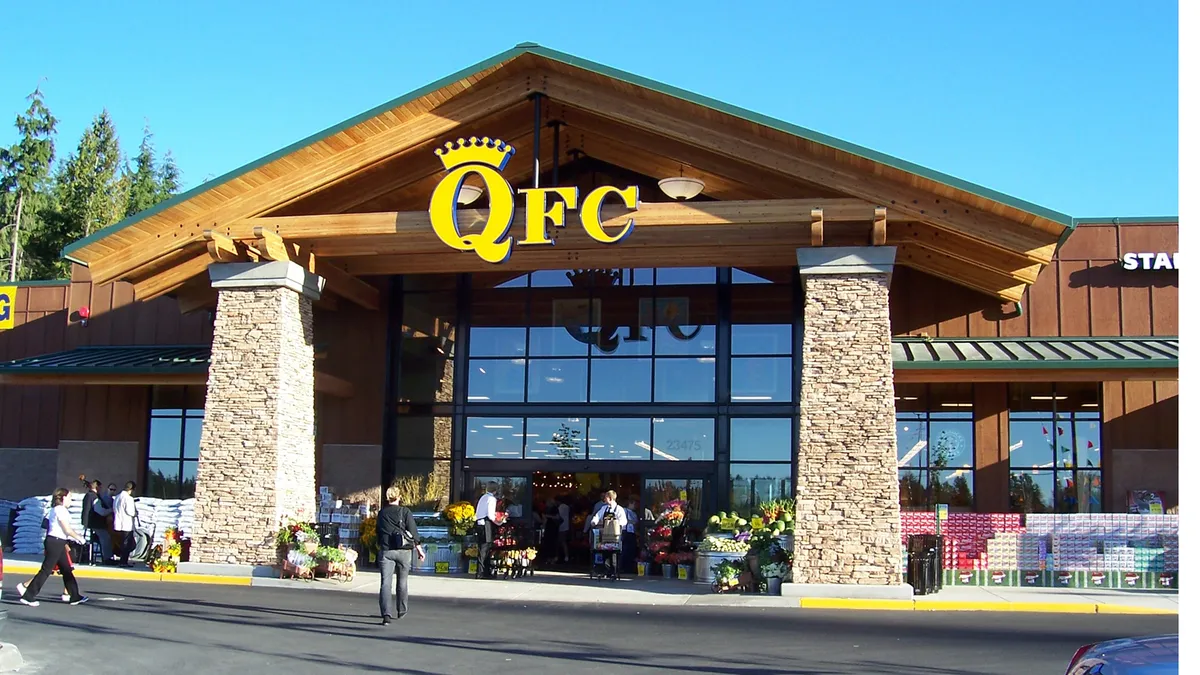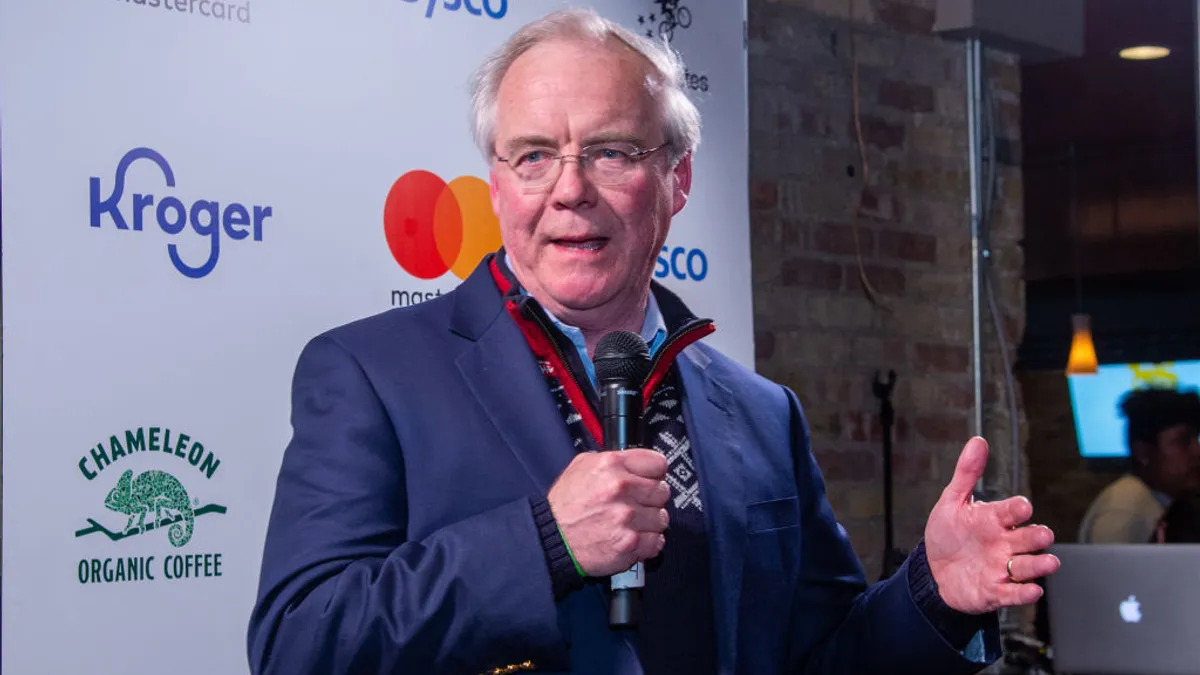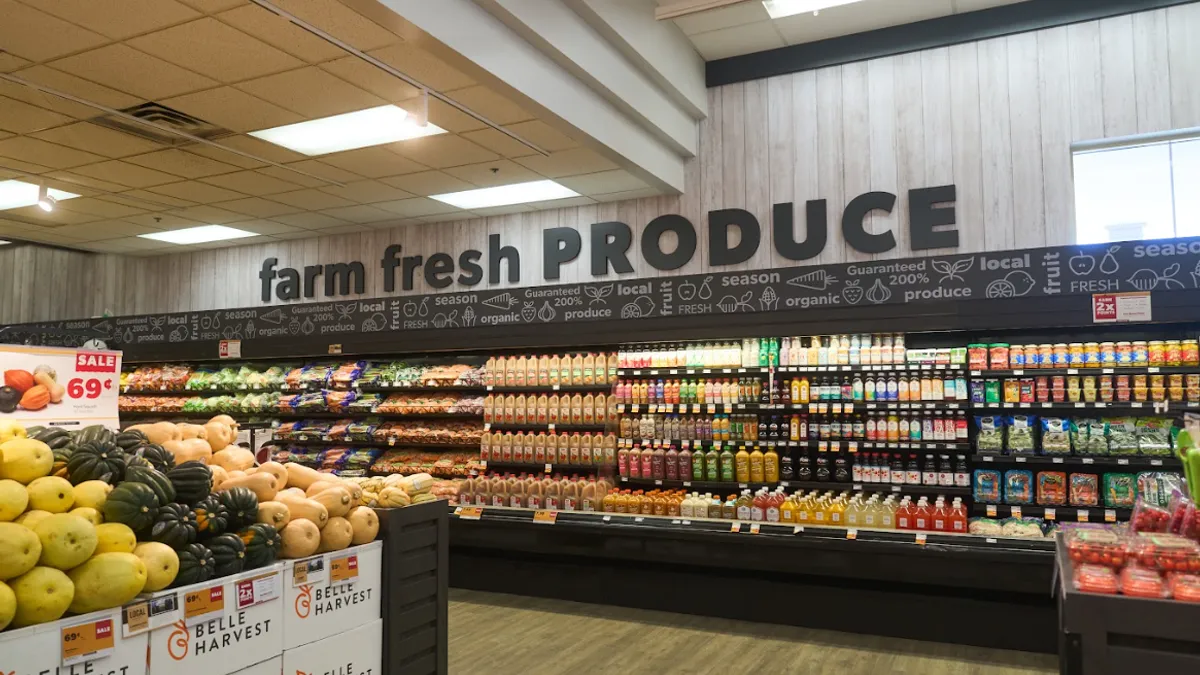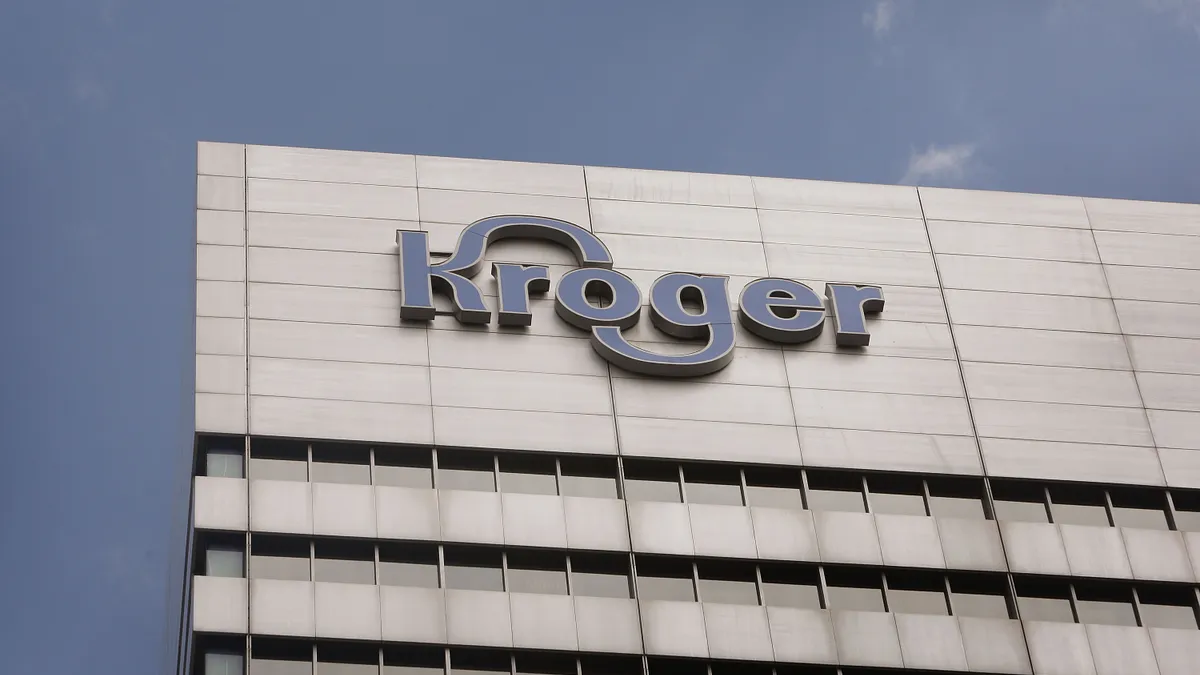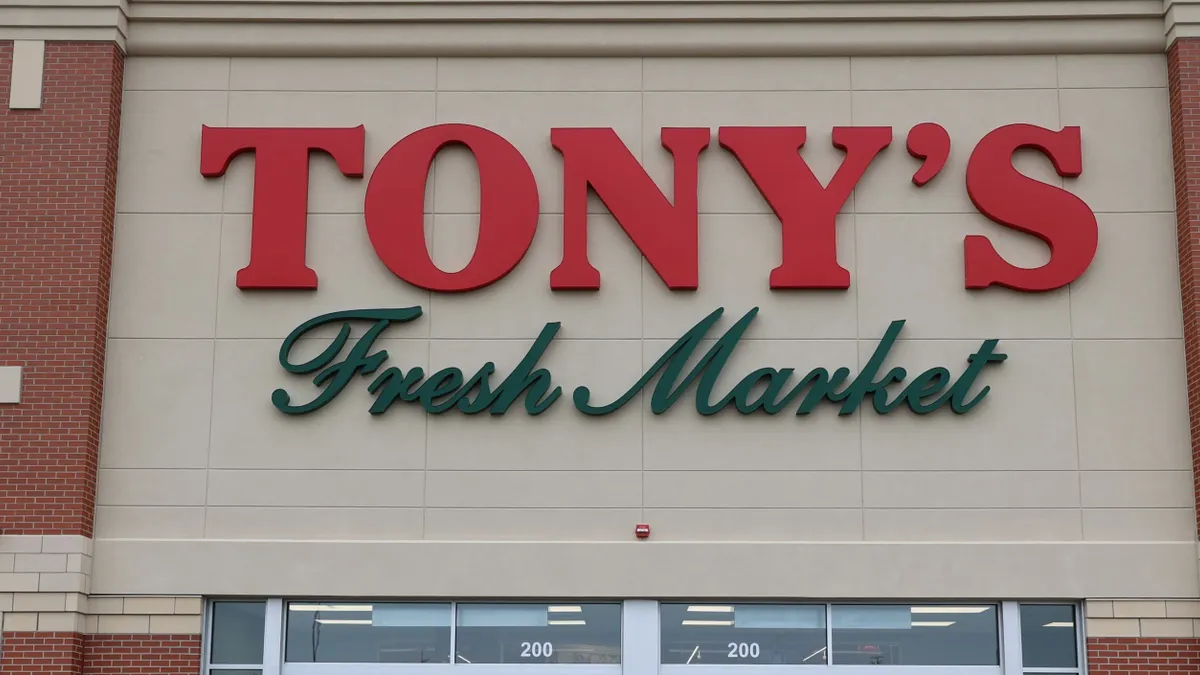Editor’s note: This story is the second installment in a monthly series looking at popular food packaging innovations. Previous articles sponsored by BMO Harris Bank can be found here.
Packaging is one of the largest causes of waste in the United States. According to the U.S. Environmental Protection Agency, 29.7% of total waste could be attributed to containers and packaging in 2015, which weighed in at 77.9 million tons.
While some may point the finger at plastics, Tim Debus, president and CEO of the Reusable Packaging Association, told Food Dive that “the real root evil of the pollution is not material based. It’s disposability.”
Since the introduction of plastics into the CPG space, explained Debus, manufacturers have opted for more and more single-use packaging for its ability to reduce shipping costs. Single-use plastic packaging is also an option that promotes convenience, something that consumers have progressively wanted more of over the decades.
All of this, however, comes at the expense of sustainability.
Demand for conveniently packaged options continues today, but consumers have increasing sustainability concerns. As a result, retailers and manufacturers have spent years searching for alternatives that reduce the quantity of waste sent to landfills. From minimizing the amount of glass used in each bottle to switching to compostable bioplastic, packaging innovations are nothing new. What is new is the desire to combine sustainability with reusability.
“When you give the average person the choice between the most convenient option and the most sustainable options, more often than not, the more convenient option wins.”

Toni Rossi
Vice president of global business development, Loop
In searching for an innovative method to provide consumers with sustainable yet convenient packaging options, companies including Tyme Fast Food and TerraCycle's Loop program, as well as retailers including PCC Community Markets have reimagined packaging as something reusable rather than disposable.
Reusable containers benefit the planet and companies' bottom lines. The World Economic Forum reports plastic packaging waste represents an annual loss to the global economy of $80 billion to $120 billion. Reusable options not only help alleviate that cost burden, but consumers are also willing to pay more to help solve the sustainability problem.
A new consumer culture?
A report from Packaged Facts shows households headed by adults younger than 25 are 29% more likely to consume microwaveable dinners and 26% more apt to eat frozen breakfast entrees or sandwiches. Millennials, according to a report by UBS Investment Bank, are expected to drive food delivery sales up from $35 billion in 2018 to $365 billion worldwide in 2030.
Consumers' preference for convenience has generated tons of trash as pre-packaged and delivery options become the norm. At the same time, these consumers don't want to create waste.
To solve this dilemma, companies including Procter & Gamble, Nestlé, PepsiCo, Unilever and The Body Shop have signed onto initiatives that make reusable packaging convenient.
“When you give the average person the choice between the most convenient option and the most sustainable options, more often than not, the more convenient option wins,” Loop’s vice president of global business development Toni Rossi told Food Dive.
Rather than combat human nature and work to convince consumers that a little sacrifice now will pay off in the long run, Loop plays into the consumer search for an "easy" button, Rossi said.
“It’s a model of reusability, but it acts like single use. We’re not asking the consumer to do anything different than they would today,” he said.
Loop is an online delivery service where customers select their products and pay for the order (including a fully-refundable deposit on the reusable jars) and wait for it to be delivered in a reusable tote. Shipping is free after seven items are ordered. When the product is used up, customers replace the jars in the tote and wait for UPS to pick up their used containers and deliver their replacement order.
Although Loop only began its U.S. pilot program in May, the idea of fusing reusability with convenience has generated wide appeal. The waiting list for the service, which currently serves 5,000 people is the Northeast, is 85,000 people long.
“We’ve made sustainability irresistible,” said Rossi.
Reusable packaging is not just irresistible when it lands on a doorstep. Henry Simonds, the co-founder of Tyme Fast Food, told Food Dive that reusability is all about reframing the conversation around packaging. Simonds asked himself a question when he started the company.
“How do you do (sustainable food delivery) in a way that sort of finds a great alternative that’s not going to sacrifice on food taste and convenience and price, but delivers a product that has a seriously positive impact on people and planet?” Simonds said.
His answer was to offer plant-based meals in a reusable plastic jar.
Simonds said the intent was to have customers return empty jars to Tyme for sanitization and reuse by the company. Tyme gave $1 off new purchases when customers returned jars, which resulted in an 80% return rate. It quickly became evident the jars were appealing for reuse in other ways. From storing change to packing homemade lunches, Instagram showcases the multitude of uses for Tyme’s lunch jars.
One of the more interesting uses is the transformation of these lunch containers into plant containers. Tyme started this initiative, sending soil and seeds along with some lunch deliveries to encourage creative reuse.
“We were trying to do what we could to make them used to the best of their ability as well,” said Simonds.
Reusability isn’t free
Despite reusable packaging's obvious benefit of keeping tons of garbage out of landfills, there are some challenges associated with creating reusable packages, not the least of which is the expense.
For companies participating in Loop's program, including Procter & Gamble and Nestlé (both founding investors) — along with PepsiCo, Unilever, Mars, Clorox, The Body Shop, Coca-Cola European Partners, Mondelez and Danone, purchasing a new mold to make a custom package from stainless steel can cost anywhere from $250,000 to $500,000, explained Rossi.
That investment, although initially steep, pays off in time. Compared to a disposable plastic container, Loop containers are environmentally neutral after three uses, according to lifecycle research done by the company. After seven uses, the reusable container has 74% less impact on the environment than a disposable one.
"We've made sustainability irresistible."

Toni Rossi
Vice president of global business development, Loop
Monetarily, the more frequently the containers are used, the lower their cost per use. Although Rossi said that the point at which a Loop container becomes cheaper is different for every manufacturer, Loop containers are viable for approximately 100 uses, so a $3 container would cost three cents per use. A plastic container can cost anywhere from 13 to 30 cents a piece.
Reaching those economies of scale, however, takes buy-in on the part of companies and consumers — something that Simonds said requires the deep pockets and established infrastructure of CPG titans.
Even for companies with the wherewithal to make the change, switching supply chains and creating a method to receive and sanitize used containers takes commitment.
When it comes to sanitizing containers for reuse, there are many details that need to be met. Ensuring that a container previously filled with nuts is safe to use around someone with a severe allergy required significant attention to cleaning processes, Rossi said. Loop addressed this concern by sanitizing its containers with a similar technology that is used to sterilize medical devices and meets FDA standards.
Simonds also said sanitizing the jars was of paramount concern when Tyme chose to pursue reusable containers for their fast food concept due to cross-contamination potential. Similar to Loop, the fast food company chose to use a sterilization process that meets FDA sanitization standards and wipes allergens clean from the containers.
Another concern revolves around the packaging that the containers are transported in. Today's grocery shopping experience uses lots of plastic bags and cardboard boxes. However, both containers contribute to the waste problem.
Rossi said designing the bag Loop containers arrive in was one of the top challenges associated with making completely reusable packaging. On one hand, the material needed to be durable and reusable, but on the other, it needed to be collapsible for those who lived in small spaces and didn't want a Loop tote to be a new piece of furniture. The resulting fabric tote is easy to clean and offers enough protection and insulation with its compartmental design. Loop does not need to use any additional packing materials like bubble wrap to protect the reusable jars inside.
The question of shopping bags was particularly pressing for Seattle's PCC Community Markets. In 2007, the cooperative completely switched to reusable shopping bags. Brenna Davis, the store's vice president of social and environmental responsibility, told Food Dive that 50% of their shoppers use reusable bags today. The store still offers paper bags for those who forget, and also sells cloth totes or durable plastic bags for shoppers starting their reusable bag collection.
“I think it takes time to get the customer or the shopper in the habit of bringing their reusable bags," she said. However, once the habit is formed, she said it adds to customer experience.
"They want to find ways to have less packaging and less plastic and this is a really easy way to do that," Davis said. "...It makes them part of the solution to our really complex environmental problems.”
Reusable shopping bags are just one piece of the puzzle, although Davis said it's a "key piece." From the deli to the center aisles to products that are received by PCC Markets, plastic abounds, she said. Although Davis explained that removing plastics from the markets will be a long, slow process, the co-op grocery store chain is "actively working" to further reduce plastic in their stores and PCC Markets has committed to removing petroleum-based plastics in its deli by 2022.
Reusability is not just for consumers
Reusability is more visible on the consumer side. However, Debus said, switching to reusable materials may actually be more impactful for manufacturers.
Exchanging the disposable pallets, boxes and shipping containers coming through factory floors daily would make a significant difference.
“From a per weight basis that’s where you could really minimize the amount of solid waste that’s being distributed in the supply chain,” Debus said.
Not only would reusable packaging cut down on trash, but it would also help protect the quality of products and streamline the supply chain. This is extremely important for produce like strawberries, said Debus. He explained replacing stacked, corrugated cardboard boxes with durable plastic containers would help prevent crushing the produce and allow for additional airflow to keep the fruit chilled and mold-free.
“You can actually build a reusable plastic container that not only has the strength and durability to move perishable cargo through the supply chain and better protect that … but you can actually mold the container to have better ventilation patterns to maximize the airflow,” said Debus.
“I’m a believer that the concept has so many advantages to it in customer satisfaction, waste elimination (and) cost savings. At the end, these ideas will converge and the scale is going to be there. People are going to realize that at the end of the day, this just makes great business sense.”

Tim Debus
President and CEO, Reusable Packaging Association
Getting reusable packaging to become the dominant choice in a company’s supply chain or for consumer packaging will require companies to consider packaging as part of the product and not an afterthought, Debus said.
Will America ever get on board?
In other parts of the world, reusable packaging is the norm. However, the United States is not especially equipped to encourage reusable packaging, said Angie Slaughter, vice president of sustainability procurement at AB InBev.
“I think we’re unique in the U.S. that we don’t have the infrastructure, we don’t have the buy-in from the consumer, but I do think that there’s interest,” she told Food Dive.
AB InBev has reusable glass beer bottles and kegs in Canada and is looking at piloting reusable bottles in the U.S. in the future.
In Canada, infrastructure for bottle returns exist and is a thriving industry. With bottle bills that encourage consumers to return bottles to the manufacturer for a monetary reward to the government requiring manufacturers to pay to recycle its packaging (the payment varies from province to province) recycling rates in Canada far outpace those of the United States. Return rates for glass bottles in Canada average about 80%, while the U.S. only offers bottle bills in 10 states.
Simonds said that it's not just policy and infrastructure hindering the development of reusable packaging. There continues to be a hesitation on the part of consumers that limits reusability. The majority of that hesitation comes from the lack of convenience associated with reusability. Once the two competing interests merge, however, Simonds believes that sustainable packaging will become more prevalent.
Without the infrastructure to make returnable and reusable containers easy to circulate through the supply chain and cost presenting a financial barrier to the company being able to provide its own return system, Tyme is reconsidering its packaging as it expands. Going forward as an e-commerce platform, Simonds said that the food will be sent in compostable containers.
Even though the idea is nascent in the U.S., Rossi said that today’s market is starting to exert external motivation onto CPG companies to look into new, more sustainable forms of packaging.
“They’re motivated to do this. They know they need to change," Rossi said. "They have corporate mandates that say they must.”
Although many companies are indeed bound by corporate sustainability pledges, reusable packaging is one of many methods to address sustainability concerns. Debus maintains it is the most logical choice for the company and the environment.
“I’m a believer that the concept has so many advantages to it in customer satisfaction, waste elimination (and) cost savings," he said. "At the end, these ideas will converge and the scale is going to be there. People are going to realize that at the end of the day, this just makes great business sense.”
This series is brought to you by BMO Harris Bank, a leader in commercial banking. To learn more about their Food & Beverage expertise, visit their website here. BMO Harris Bank has no influence over Food Dive's coverage.


